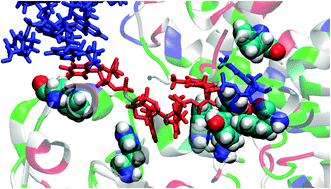The inhibitory effects of vinylphosphonate-linked thymidine dimers on the unidirectional translocation of PcrA helicase along DNA: a molecular modelling study†
Abstract
The PcrA DNA helicases are important bacterial enzymes and quintessential examples of molecular motors. Through conformational changes caused by ATP


 Please wait while we load your content...
Please wait while we load your content...